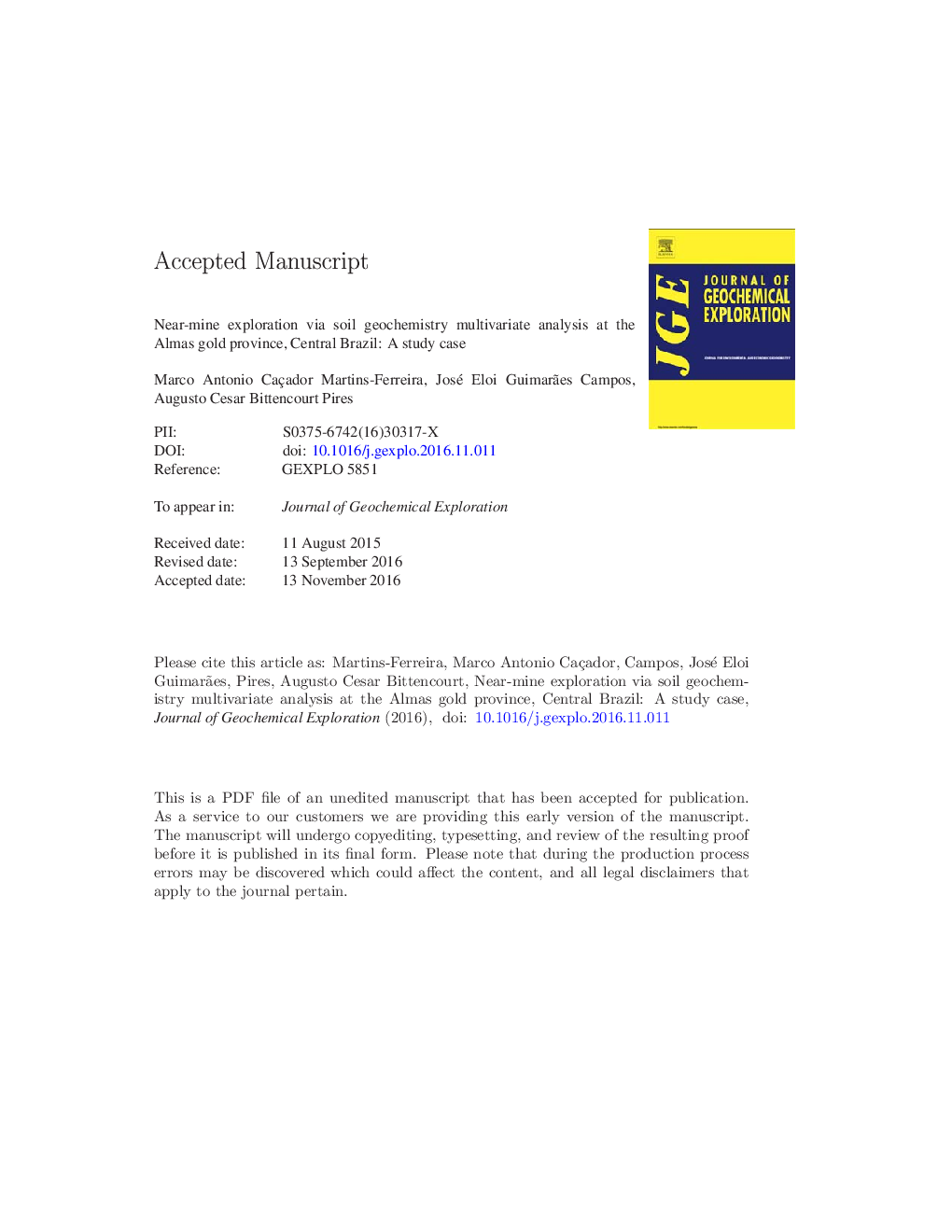| Article ID | Journal | Published Year | Pages | File Type |
|---|---|---|---|---|
| 5754588 | Journal of Geochemical Exploration | 2017 | 39 Pages |
Abstract
Common multivariate methods such as factor analysis, hierarchical cluster analysis and k-means cluster analysis were employed to analyze a high-dimensional geochemical dataset. The dataset is composed of 2908 ICP-MS multi-element analysis of soil samples. The aim is to identify potential near-mine prospects in a gold mineralized area where outcropping ore is no longer available and tropical soils cover the area. In order to accomplish that aim, the study targets on identifying anomalies of elements indicative of distal alteration (propylitic alteration), since the encapsulated nature of the mineralization makes distal alteration an indicative of ore at depth (phyllic alteration). The main methodological objective is to demonstrate the importance of adapting the methods to the specific geological reality, especially when working on near-mine environments, by adopting a method of local spatial validation of multivariate analysis results. An objective approach was adopted. By objective approach we mean that objects (geological data) from a well-known mining area (control area) were used to validate the analysis results and ensure their quality. The control area is surrounded by unexplored terrain, which is the exploration target of this study. This unexplored terrain was covered by a soil grid comprising an area of 88Â km2. By the proposed approach, final factor analysis results were able to provide 5 correlation factors explaining 71.2% of the total variance of soil composition. These factors identified distinct elemental associations with high correlations, influenced by the parental materials: ultramafic, mafic, pegmatitic, distal and proximal hydrothermal alteration. Hydrothermal alteration occurs mainly on tonalitic parent material, since the mafic/ultramafic and pegmatitic emplacement were late or posterior events. Hierarchical cluster analysis was able to correctly distinguish mafic/ultramafic from felsic/hydrothermal influenced samples and a disaggregated sub-dataset composed only of felsic/hydrothermal samples was created. The K-means cluster analysis of this sub-dataset provided accurate groups of observations representative of country rock, distal alteration and proximal alteration. Microprobe analysis of drill core ore was used to identify the elemental concentrations in each mineral phase and aided on results interpretation. The above methods allowed the identification of a geochemical fingerprint, defined by the elemental association Ba, Ca, La, Na, Pb and Sr, for distal alteration zones and enabled the mapping of new target areas for near-mine exploration. Spatial analysis of the clustering results, in comparison with the previously mined area, was very effective in determining the best methods of clustering and data preparation and to validate the results. This process proved adequate for the detection of precise locations in the study area with high potential for mineralization. The results obtained were used to indicate four new target areas and three sub areas with sufficient accuracy for future planning of an exploratory drilling program. The use of multivariate methods by the approach adopted has been shown to be extremely efficient for near-mine exploration scenarios, where the availability of areas with enough geological knowledge can serve as testing grounds to assure a given method's accuracy.
Related Topics
Physical Sciences and Engineering
Earth and Planetary Sciences
Economic Geology
Authors
Marco Antonio Caçador Martins-Ferreira, José Eloi Guimarães Campos, Augusto Cesar Bittencourt Pires,
